|
With Digital Photo Professional Ver. 4.0, you can perform the following types of saving according to your requirements.
| Save | All the contents adjusted with the tool palette (recipe) can be saved to the RAW image. |
| Save as | All the contents adjusted with the tool palette (recipe) can be saved as a separate RAW image. The original RAW image remains unaffected. |
| Convert and save | Convert adjusted RAW image to a JPEG or TIFF image and save. The image is saved as a separate image, so the original RAW image remains unaffected. |
| Batch process | You can batch convert and save edited RAW images to highly versatile JPEG or TIFF images. The images are saved as separate images, so the original RAW images remain unaffected. |
For details about each of the above saving methods, please refer to the following sections.
Save/Save As All the contents (recipe) adjusted with the tool palette as well as the trimmed range information can be saved to a RAW image or to a separate RAW image.
The adjustments made with the tool palette and the dust erase processing can also be saved in a RAW image.
1. Select an image to save.
- To save an image from the main window, select the image by clicking it.
- To save an image from the edit window, perform procedures from step 2.
2. Select [Save] or [Save As] from the [File] menu.
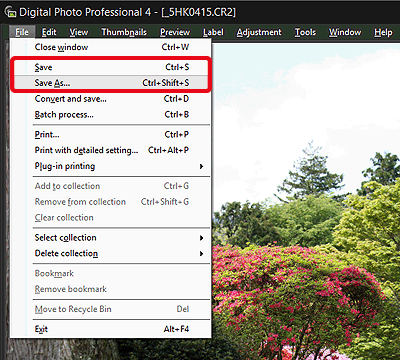
3. If [Save As] is selected, the window shown in the example image below appears. Specify a file name and location to save the image, and then click [Save].
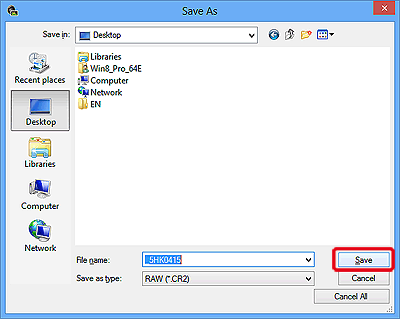
Convert and save (Saving as a JPEG or TIFF Image) To view, edit and print a RAW image with software other than Digital Photo Professional Ver. 4.0, convert to a more versatile JPEG or TIFF image and save. The image is saved as a separate image, so the RAW image remains unaffected.
1. Select the image to be converted.
- To save an image from the main window, select the image by clicking it.
- To save an image from the edit window, perform procedures from step 2.
2. 2. Select [Convert and save] from the [File] menu.
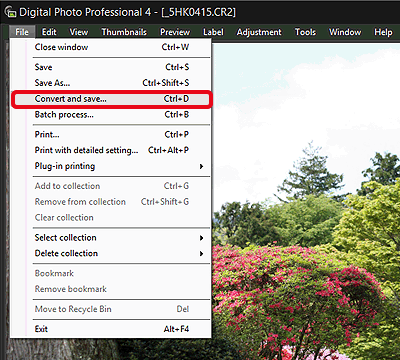
3. The [Convert and save] window appears. Specify a file name, a location to save the image, and the image type, and then click [Save].
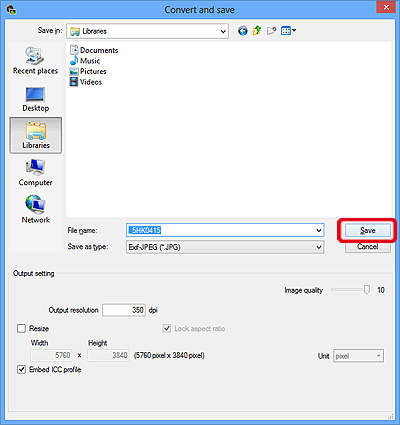
4. The RAW image is converted to a JPEG or TIFF image which is then saved as a new image in the specified save destination.
NOTE
- By default, the image is converted and saved to a JPEG image with the highest image quality, without changing the image size. Change the settings according to your requirements.
- You can improve the quality of a JPEG image by reducing the noise particular to JPEG images. For more information, please refer to the Digital Photo Professional Ver. 4.0 Instruction Manual.
Batch process You can batch convert and save edited RAW images to highly versatile JPEG or TIFF images.
The images are saved as separate images, so the RAW images remain unaffected.
1. In the main window, select multiple images to be converted.
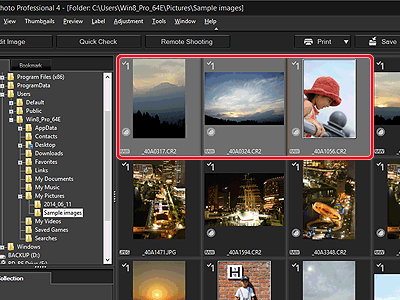
2. Click [Batch process] in the [File] menu on the toolbar.
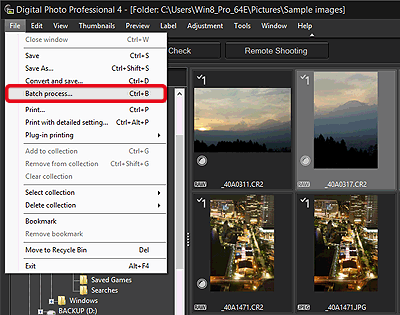
3. The [Batch settings] window appears. Specify the required settings, and then click [Execute].
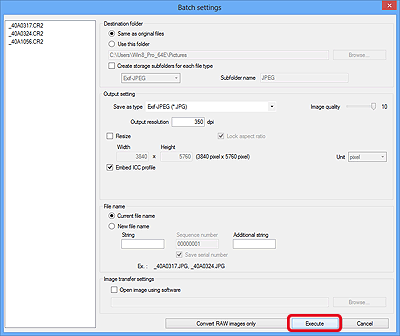
4. The following window appears, and the image is saved.
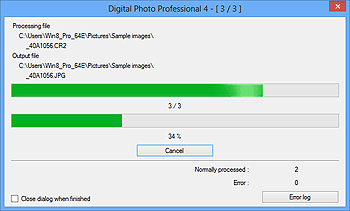
5. In the processing dialog box, click the [Exit] button.
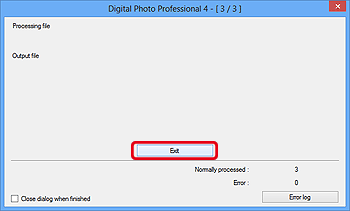
NOTE
- In the [Batch settings] window, you cannot perform [Save] or [Save As] to edited RAW images.
- To convert all images and save, do not select an image in the main window. If you do not perform step 1 and perform step 2 with no image selected in the main window, all the images displayed in the main window will be converted and saved.
- If you have selected [New file name] in [File name], [Sequence number] has to be set.
|